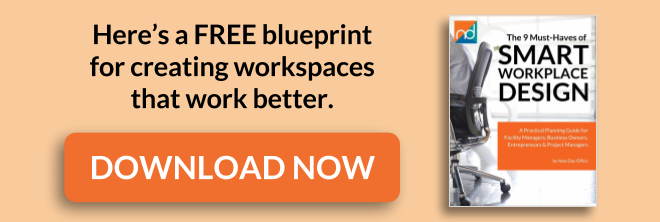Office Furniture Solutions to Chronic Productivity Problems
By Matt Brady
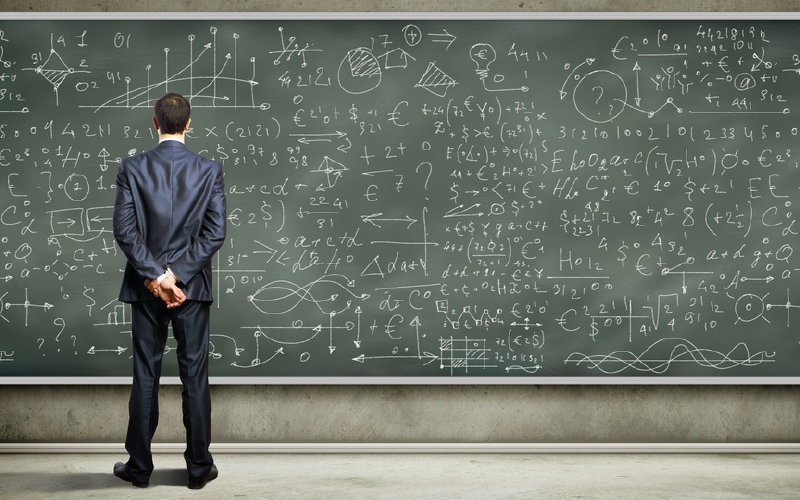
Office furniture alone can’t create a more productive workplace, but sometimes the right piece of furniture can make a big difference.
If you want to give your business a productivity boost, take a closer look at three chronic workplace problems and their office furniture solutions…
Problem #1: Conversation creep
You’re staring at a blank cursor, hoping that the right words come soon.
This proposal is a pretty big deal. Your team has been working with this client for months and your persuasive prose could be the deciding factor.
But all you can think about is what happened last night on Game of Thrones, how bad Baltimore looks this season and which of the temp workers took Diane’s staple remover.
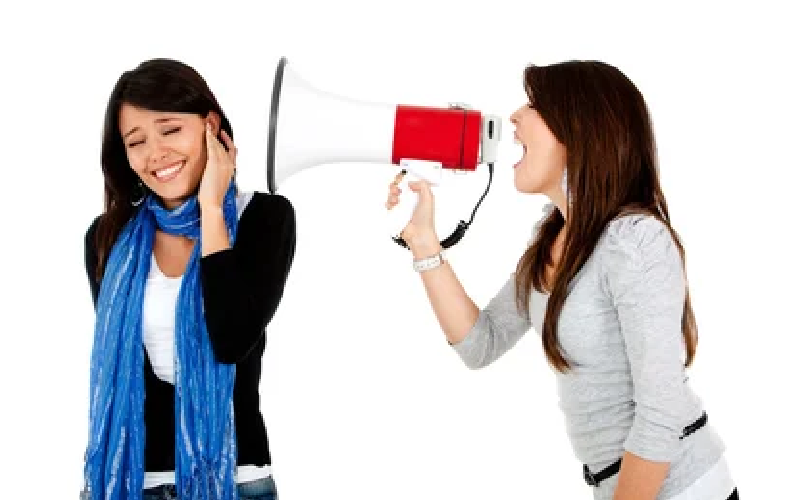
Other people’s conversations are wreaking havoc on your ability to focus. You could reach for your headphones, but you’d rather relocate to an oasis of quiet.
And since you have a 4 p.m. meeting, this peaceful paradise should be somewhere close.
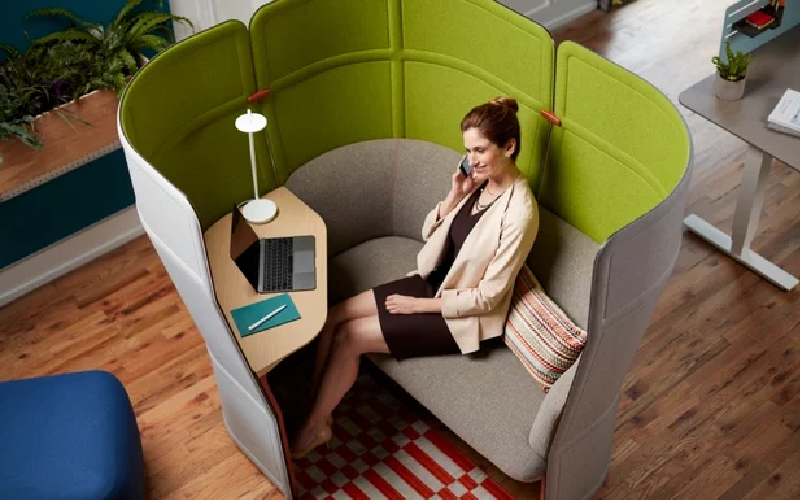
Solution: Privacy booths and “oasis” workspaces
Noise is one of the biggest distractions in the modern workplace. But the solution isn’t to lock your doors and line the walls with egg crates and acoustic foam.
If it’s solitude you seek, I can recommend a much more comfortable option than working in a utility closet or lugging your laptop to the local library.
But you should know that these are definitely not your father’s (or grandfather’s) cubicles.
Take a look at upholstered booths, cubes and chairs that curve up, over and around to block out ambient sound. They make a bold visual statement and offer the perfect retreat when your work requires focus and concentration. These privacy pods are particularly effective when companies add them as “bonus workspace” that can be used as needed by employees who need a change of scenery (and soundtrack).
More companies are discovering that productivity improves when employees can choose from a variety of work areas. Thanks to wireless technology, almost every employee has the option of working anywhere inside (or outside) the office.
If your office or cubicle is your primary residence, think of these as your “heads down” vacation homes.
- Check out the Openest Corner Booth, designed by Patricia Urquiola for Haworth
- Check out Wanders’ Tulip, designed by Marcel Wanders for Haworth
Problem #2: Hitting the “3pm slump” around 11am
You know the feeling.
It’s a dull ache that spreads through the lower half of your body. It comes from squirming in your seat for what feels like an unusually long and torturous Tuesday.
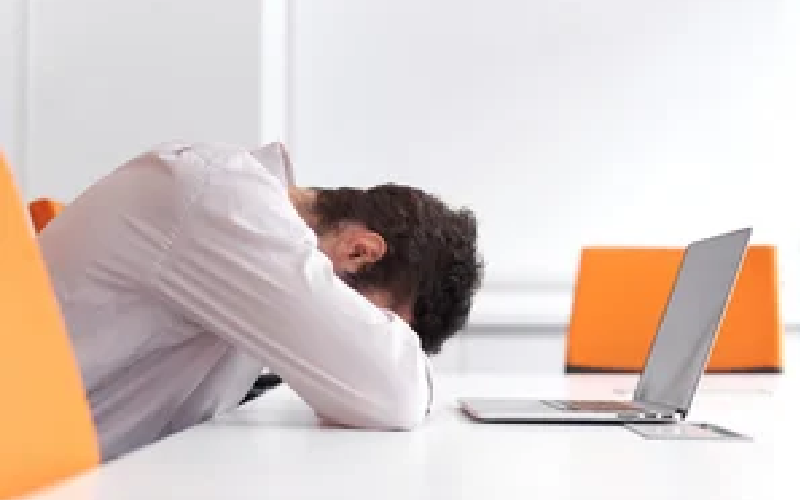
You start to hunch forward, you shift positions every few seconds. But no matter what you do, you can’t get comfortable enough to write a single email, let alone complete the new client proposal that’s due on Friday.
You can get up, go for a walk and hit the coffee machine again, but as soon as you get back to your desk, all of your energy vanishes.
Not to get too personal, but you might want to check your seat.

Solution: Ergonomic seating and sit-to-stand desks
There’s a good reason that “ergonomic” is one the biggest buzzwords in the modern workplace: it works.
Ergonomic seating lowers stress, strain and pain. It adjusts to your body shape and work style. The right ergonomic seating boosts your energy and lowers your risk of injury.
When you’re sitting comfortably, you can focus and be more productive.
If your chair has become the enemy, it’s probably time to trade up. Research your ergonomic options and take chairs for a “test drive” whenever possible. Remember, your body is unique and finding the right ergonomic fit is key.
Before you start shopping, make sure you understand exactly what makes an ergonomic chair so different.
It also makes sense to consider a sit-to-stand desk.
You’ve probably it heard a million times over: sitting is the new smoking. Your desk job will kill you. Chairs should come with a warning from the Surgeon General.
I’m not sure that things are quite that bad, but most experts agree that changing positions throughout the day is beneficial to well-being, comfort and productivity. Standing at work burns more calories, can lower the risk of heart disease, reduce back pain and may even improve mood and energy levels.
The sit-or-stand debate rages on and it seems like new findings are released every week. Do whatever feels right for you. The real secret to feeling better at work is to keep moving because most of the negative health effects associated with sitting come from prolonged inactivity.
- Check out the Haworth Fern task chair, designed by Haworth Design Studio and Ito Design
- Check out the Haworth Jump adjustable table
Problem #3: Clutter and chaos
You had the folder in your hand.
Then you put it down to answer the phone.
Now it’s gone.
“It was right here on the table,” you say.
“Am I going crazy?” you ask.
No, you are not going crazy. It WAS right there on the table.
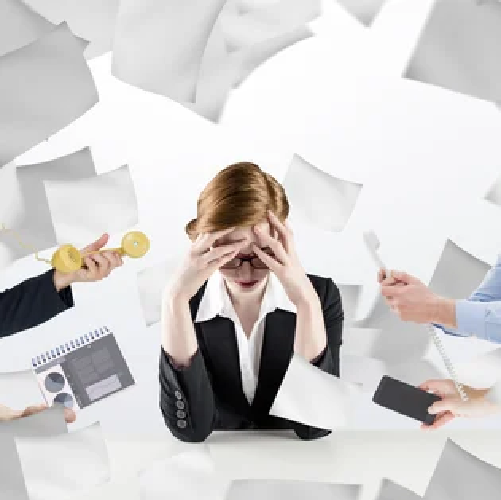
But now it’s disappeared into the mayhem of the marketing workroom. The place is like some kind of paperwork black hole, from whence nothing ever returns.
It’s a disorganized mess, and disorganized messes are bad for business.
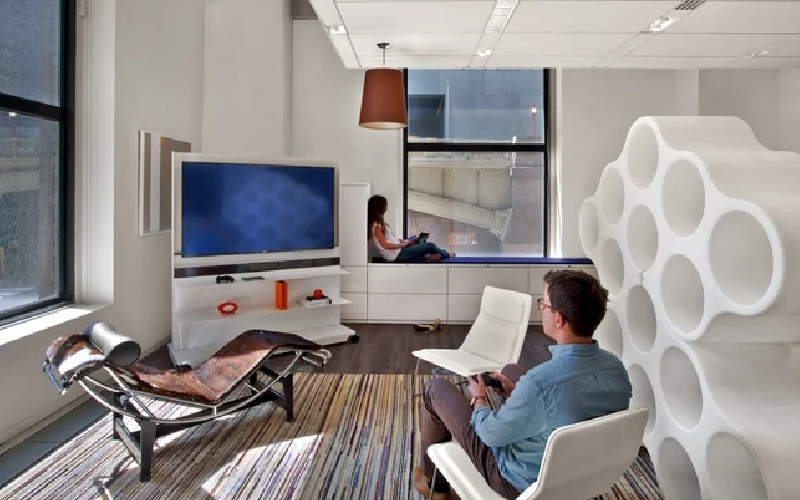
Solution: Smart, customizable storage
Everything is in its right place.
Some people read that line and think of an oppressive system of organization that stifles creativity and adds more busy work to an already busy day.
Others savor neatness and order like fine wine.
It really doesn’t matter which best describes you, because everybody in your company has to agree when it comes to storage and organization. Offices can’t function if they don’t flow.
The good news is that the age of uninspiring industrial filing cabinets is over.
Modern storage options allow individuals to create unique configurations for their own workstations. You’ll find that more case goods are designed to maximize vertical space, which reduces their overall footprint. They also blend form and functionality to become more than just a place to stow papers and office products.
Aesthetically, most storage product lines can be customized to blend seamlessly with your company’s visual brand and floorplate. You can choose from more styles, colors and materials than ever before.
You’ll also find that everything from credenzas and personal storage towers to lateral files and pedestals are being designed for flexibility. They can be easily reconfigured and relocated. The modern office is always in motion and modern office furniture is built to adapt.
Even though more companies are transplanting their archival needs to the digital cloud, most current work is still taking place on paper to a certain degree. That’s why organization and order in the physical space still matter.
Well-thought-out storage systems are vital for keeping day-to-day operations running smoothly.

